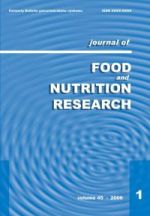Vedecký časopis - archív
Journal of Food and Nutrition Research
Súhrny čísla 4 / 2024
Malik, M. – Tomar, D. – Singh, N. – Khatkar, B. S.
Selection of salt level in noodle making using technique for order of preference by similarity to ideal solution
Journal of Food and Nutrition Research, 63, 2024, č. 4, s. 344-351
Bhupendar Singh Khatkar, Department of Food Technology, Guru Jambheshwar University of Science and Technology, Barwala Chungi, Gate number 3, Auto Market Road, 125001 Hisar, Haryana, India; Plot No. 807, Megastar Foods Ltd., Industrial Area, Phase-2, Chandigarh-160002, India. E-mail: bhupendarkhatkar@gmail.com
Original article
Received 10 May 2024; 1st revised 18 July 2024; accepted 8 October 2024; published online 27 November 2024.
Súhrn: The effect of sodium chloride on the quality of flour and noodles was investigated and interpreted using technique for order of preference by similarity to ideal solution (TOPSIS), a multi-criteria decision making technique. Various amounts sodium chloride were added to wheat flour (0–20.0 g·kg-1) making 9 groups. Key quality characteristics such as peak viscosity of flour and cooking loss, hardness and overall acceptability of noodles were studied for selection of appropriate content of sodium chloride. The results showed that addition of salt significantly increased peak viscosity of flour and cooking loss, hardness and overall acceptability of noodles, while the influence on hardness and overall acceptability was more pronounced. As per TOPSIS results, appropriate amount of sodium chloride per wheat flour for noodle making was
Kľúčové slová: noodle; salt; peak viscosity; hardness; multi-criteria
Na stiahnutie:
jfnr-2024-4-pp344-351-malik.pdf (PDF, 516.44 Kb, 128x)










